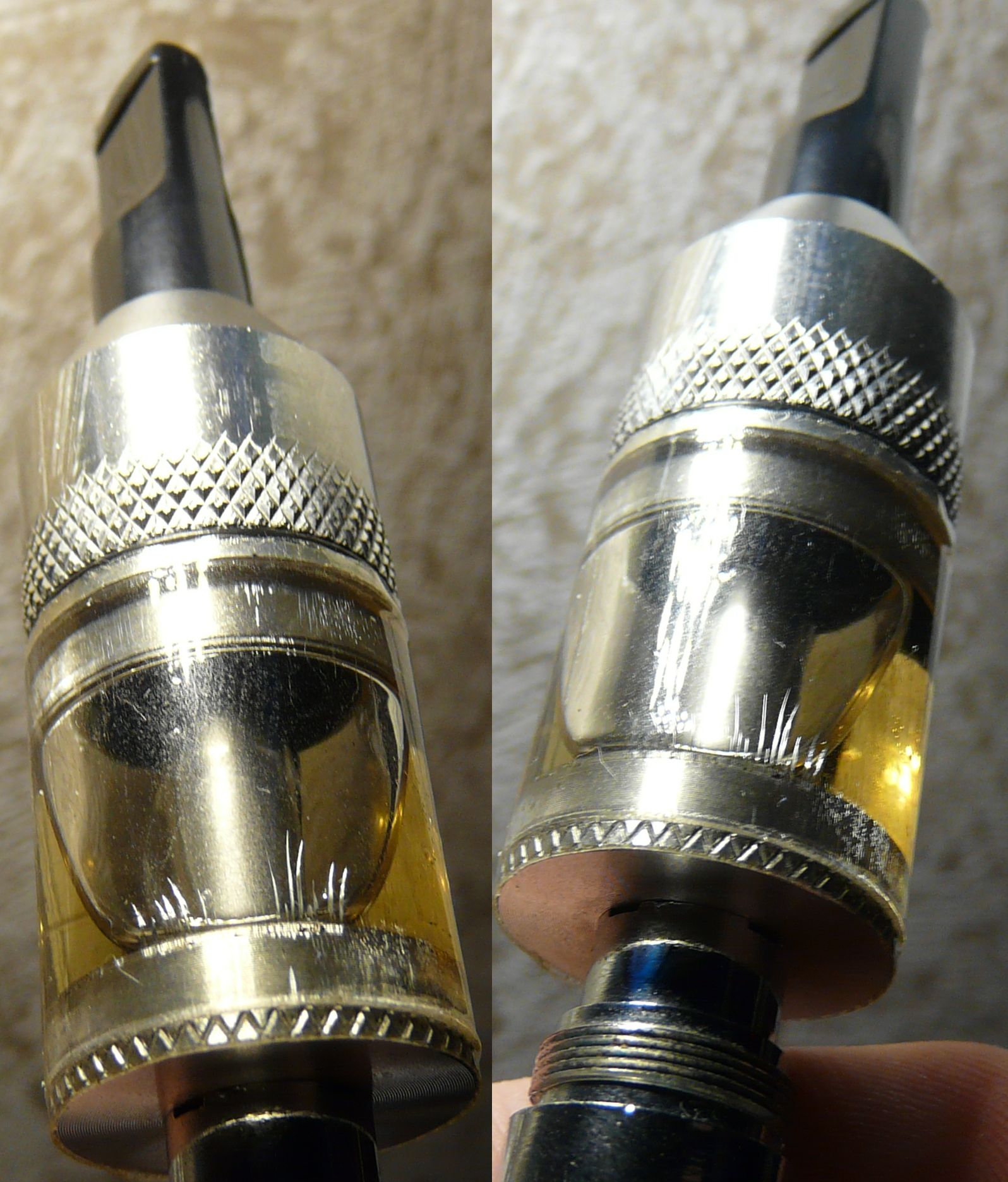This is the latest in atomizer fashion – Genesis v5. A tank, quite heavy, since it is made of stainless steel.
The bundle includes a couple nichrome wires for coil replacements, a piece of glass-fiber tube, a square of 350 mesh, a transparent drip-tip. It is all packed in a plain paper box. As for the drip-tip, you may use any, like this one from a 901 atomizer. For the tip to hold securely, the hole for them is slightly less in diameter, so you may have to file down the plastic a little bit to fit it. Personally, I like the soft rubber drip-tip the most. The opening is much smaller, the flow is a bit harder, but that makes the vapour thicker. You can find such tips bundled with clearomizers. The atomizer also comes with a ring for the eGo battery. It improves visually the difference in diameter between the atomizer and the battery, and the assembled unit looks much better. To understand the difference between a Genesis and any other atomizer, unscrew the top. The main difference is the wick: instead of glass-fiber, cotton, bamboo or other threads, a piece of stainless steel mesh is rolled into a wick, and the wire is coiled right onto it. To avoid short-circuit, scale is purposefully deposited between the mesh and the wire. This process is for some reason called oxidizing on some related forums. China manufactures didn’t bother with all that, and just put some glass-fiber between the mesh and the wire. So this way it is a sort of hybrid between a genesis and a simple tank. Talking about the tank: the manufactures claim it is 3 ml. But the central shaft, which is sometimes called a dumbbell, takes almost half of it. So the payload volume will be only just above 1.5ml, judging by the syringe I use to fill it up. And since the device is a freaking steam engine… … such output combined with this volume means you will have to fill it up quite often. And this process is not exactly user-friendly. The e-liquid port is covered by a simple screw, which is a good point on one hand, but on the other hand it is tiny and you need a philips screwdriver to remove it. Moreover, you will need a syringe or a needle-headed bottle to fill it. So, that means you will have to carry around a screwdriver, a bottle and a syringe, and you’d better find a table to make fill-up process easier. The problem could be solved with a screw that can be unscrewed with bare fingers, but out of all computer-related bolts I have i failed to find any with a fitting thread. Another badly located screw is the one holding the other end of the coil. It is too far away from the wick, and extra length is never a good thing. This screw should be closer to the coil. The same problem with the air intake port. It is just a hole in the side of the atomizer, and as far as I can see, they just drill them in random spots. For best results, it should be exactly behind the coil. It doesn’t matter much, but it doesn’t hurt to place it correctly. And the last thing worth mentioning is the tank material. There is no o-rings between the plastic and the metal, meaning the plastic was expanded and then shrunk to fit the metal parts and avoid leaking. This normally leaves micro cracks on the plastic, that could potentially expand.

To avoid that, get some transparent duct tape and holding the device so that the screw tightens when you rotate it, apply several layers of tape around the tank. Use a razor to remove excess tape. Be sure not to damage the rubber o-ring. This simple procedure could save your pockets from e-liquid spills if the plastic cracks. That’s about all the downsides I could find. Apart from those, the device is great. Quality material, well, for made in China at least, threaded connections everywhere, standard parts, and the most important – decent vapour. It is neither hot nor cool. Personally, I prefer a hotter vapour, so maybe I’ll have to play with the coils. By the way, keeping in mind the 0.7 Ohm lapse of my multimeter, the factory installed coil is roughly 2 Ohms.